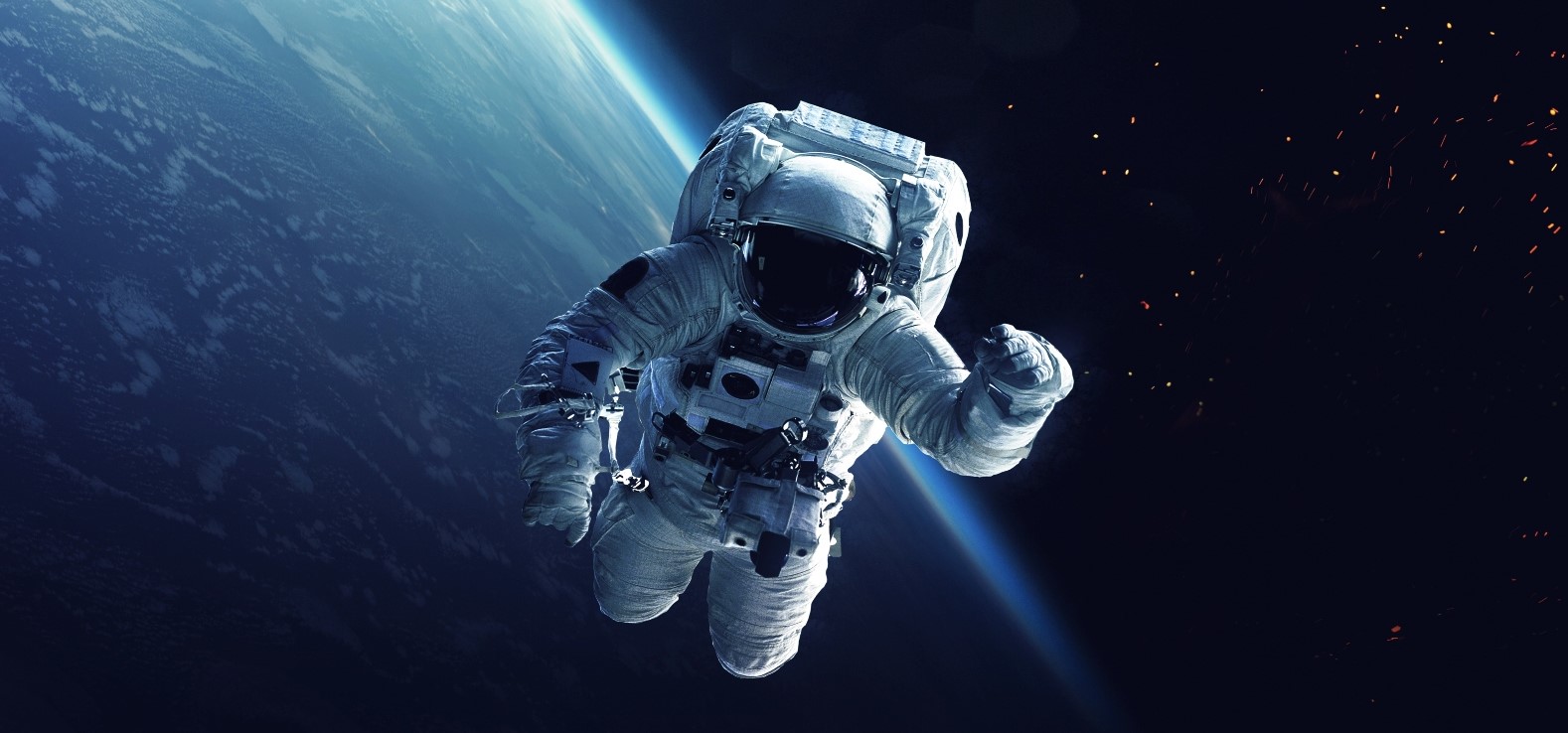NEW LINK BETWEEN CELL DAMAGE IN ASTRONAUTS AND GERIATRIC-TYPE HEALTH PROBLEMS OBSERVED IN SPACE
30 November 2020
Damage caused to human cells during spaceflight appears to be the underlying cause of health issues observed in astronauts, it has been discovered by researchers from the Institute for Global Food Security (IGFS) and School of Biological Sciences.
Working in partnership with an international team, their findings were published recently (25 November) in Cell.
Exposure to space radiation and micro-gravity during longer space missions is known to stress human physiology and can lead to serious health problems. Astronauts returned from missions on the International Space Station (ISS) have presented with geriatric-type symptoms including bone and muscle-mass loss, immune dysfunctions, cardiovascular health risks, liver dysfunction and central-nervous-system-related issues.
To date, very little has been known about why these changes occur. The IGFS researchers believe they’re the first to establish a probable cause-and-effect link between damage to ‘mitochondria’ - the structures within human cells that produce energy – and the above health problems.
Based on their findings, the researchers recommend that targeted nutrition, such as Coenzyme Q10, should be urgently explored as a counter-measure to mitochondrial damage, alongside other interventions like exercise and pharmaceuticals. Developing such counter-measures could be a game-changer for the future success of space missions and even space colonisation.
Furthermore, the development of counter-measures could potentially be extended to treat diseases in the general population here on Earth including type 2 diabetes and non-alcoholic fatty liver disease – illnesses characterised by mitochondrial dysfunction.
Dr Willian da Silveira, IGFS Research Fellow and a first author on the Cell publication, said:
“This work has provided a missing jigsaw piece which could open up a whole new arena of space-biology research and therapeutics.
“It’s timely as the world is on the brink of a new era for space exploration, with a commitment to return to the Moon and a planned manned mission to Mars.”
To conduct their data-centric study, the research team looked at data collected from NASA’s GeneLab that includes data from animal studies; the NASA Twin Study; 59 astronauts over 15 years of space travel; as well as hundreds of cell samples that were previously flown in space.
By examining data from the NASA Twin Study, in which identical (and therefore genetically identical) twins Scott and Mark Kelly were followed over time, the former on the ISS and the latter on the ground, the researchers found many differences in their mitochondrial activity.
The team also used physiological data and blood and urine samples that had been collected from dozens of other astronauts to confirm that mitochondria function in different cell types had been deregulated. Comprehensive pathway analyses identified how spaceflight impacted mitochondrial function at the genetic, protein and metabolic level.
The IGFS researchers particularly zoned in on the behaviour of the liver, since previous research demonstrated that the liver heavily regulates immune activity and is prone to more changes than any other organ during spaceflight. They found that higher levels of total cholesterol and low-density lipoprotein (LDL) cholesterol (sometimes known as ‘bad’ cholesterol) were accompanied by decreased levels of high-density lipoprotein (HDL) cholesterol (‘good’ cholesterol). These levels returned to normal after returning to Earth.
Professor Gary Hardiman, Principal Investigator on the IGFS end of the research and one of the senior authors on the Cell publication said:
“This study is important because it identifies mitochondrial dysfunction, a hallmark of ageing and metabolic diseases, as an adverse effect of space travel.
“From an IGFS perspective, where we have so much expertise in human nutrition and food safety and security, it provides an important starting point for the development of nutraceutical countermeasures.”
Additional to the above, Dr da Silveira, Professor Hardiman and their IGFS colleague, PhD student Thomas Cahill, co-authored a letter on ‘Revamping Space-omics in Europe’ published in Cell Systems.
All three researchers are members of the Space Omics topical team consortium, an ESA scientific community. This topical team promotes bi-lateral cooperation on future space-biology experiments and synergy amongst ESA member states on data innovation and enabling technologies in the context of big ‘omics’ data.
Space science to date has generated more than 300 omics datasets, many of which were planned and executed by UK and European scientists. The SpaceOmics topical team boosts international synergies for space biology among ESA member states and organizes events and training sessions to integrate ESA Space Biology Community Omics efforts.
Media enquiries should be addressed to the Communications Officer at Queen’s University Belfast.
Back to Main News
Top of Page